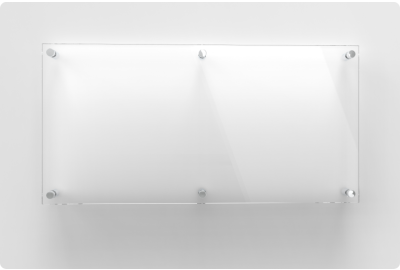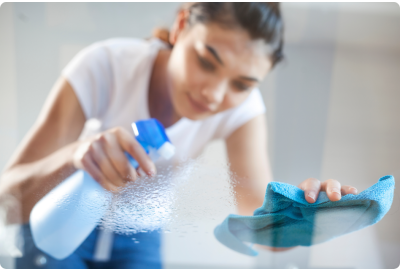Many people ask, "What is the difference between plexiglass and acrylic?" The answer is simple — there's no difference. Acrylic and plexiglass are two names for the same material: polymethylmethacrylate.
This might come as a surprise. After all, we often encounter these terms in different contexts, which can create the impression that they refer to distinct products. However, this perceived distinction is more a result of branding and marketing than material differences.
This article will delve into the mysteries of the difference between acrylic and plexiglass and provide some context for this continuing question. Let's take a closer look at the material we call acrylic or plexiglass if you prefer.
Article Contents
- What is the Difference Between Acrylic and Plexiglass?
- The History of Plexiglass and Acrylic
- Manufacturing Acrylic and Plexiglass
- The Characteristics of Plexiglass and Acrylic
- Acrylic and Plexiglass Applications
- Plexiglass and Acrylic Maintenance and Sustainability
- Frequently Asked Questions About Plexiglass and Acrylic

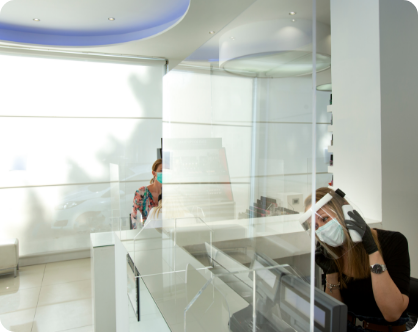
What is the Difference Between Acrylic and Plexiglass?
The difference between acrylic and plexiglass is based on the origins of the words. Acrylic comes from the chemical name of the material, polymethylmethacrylate, while plexiglass comes from the trade name Plexiglas®. Lucite®, Acrylite® and Perspex® are other trade names for the same material.
While there is no difference between plexiglass and acrylic, there can be a difference between those two words and Plexiglas®. Polymethylmethacrylate can be produced by cell casting or extrusion. Plexiglass and acrylic are used interchangeably for materials manufactured by either of those processes. But Plexiglas®, the trademarked material, is made only via cell cast. An extruded acrylic would never be referred to as Plexiglas®.
The History of Plexiglass and Acrylic
The fascinating journey of acrylic, a material that would ultimately transform numerous industries, began in the early 20th century. In 1902, German chemist Otto Röhm first polymerized methyl methacrylate (MMA), laying the foundation for what we now know as plexiglass. However, it wasn't until 1933 that Röhm and his company Röhm & Haas AG patented and registered the brand name Plexiglas®.

When acrylic first emerged, it was celebrated as a revolutionary material that combined the clarity of glass with exceptional durability and lower weight. Initially, its primary use was to produce dental prostheses and plates. However, its potential was quickly recognized, and applications expanded to include periscope ports and airplane canopies during World War II. The material's light weight, impact resistance and optical clarity were crucial in these wartime applications, effectively proving acrylic's value in demanding environments.
With the registration of the Plexiglas® brand, acrylic's presence in the commercial market was solidified. This name quickly became synonymous with acrylic sheets, primarily due to the brand's widespread use and high-quality products. In the United States, the name was adjusted slightly to "plexiglass." Soon, other manufacturers introduced their own brands, but plexiglass took hold of modern consciousness, even though there's no difference between plexiglass and acrylic.
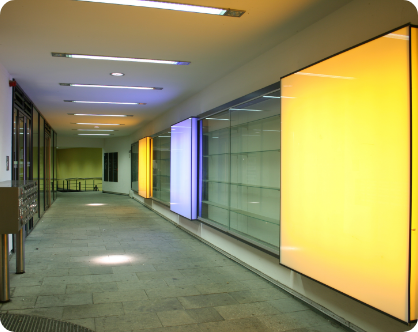
Manufacturing Acrylic and Plexiglass
Creating acrylic, or plexiglass, is a fascinating process involving several vital steps. While the procedure may seem complex, it's a carefully engineered method designed to produce a high-quality, consistent and durable material.
Acrylic sheet manufacturing includes a process known as cell casting. The procedure begins with creating a "syrup," a mixture of methyl methacrylate (MMA) monomer and other additives. This syrup is then poured between two parallel, tempered glass plates, separated by rubber gaskets to create a cell.
Next, the cell goes through a carefully controlled heat treatment in water baths. This step, known as polymerization, transforms the liquid syrup into a solid, glass-like sheet. Polymerization involves breaking the double bonds in the MMA molecules and forming new bonds that link the molecules in long chains, creating polymethyl methacrylate – the chemical name for acrylic. This process is initiated by heat and catalyzed by additives present in the syrup.
To make extruded plexiglass, the liquid material is heated and fed between two rollers until it reaches the desired thickness.
Using either method, the result is a solid material with the unique combination of clarity, strength and lightness we associate with plexiglass. Options include clear acrylic sheets and colored acrylic panels.
Quality Control and Assurance in Acrylic Production
Quality control in plexiglass production is paramount to ensure that the finished material meets customers' exacting standards of clarity, strength and durability. Several stages of inspections are conducted throughout the production process, with checks for imperfections such as bubbles, inclusions or discoloration.
In addition to visual inspections, testing for physical properties such as hardness, light transmission and thickness uniformity are also carried out. These rigorous quality control measures ensure that the finished plexiglass sheets are consistently high quality and fit for a wide range of applications.
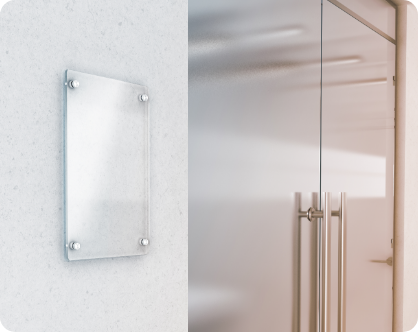
The manufacturing process of acrylic, from its beginnings as a liquid monomer to its final form as a transparent, sturdy sheet, is an intricate blend of chemistry and engineering.

The Characteristics of Plexiglass and Acrylic
Acrylic has unique characteristics that make it an invaluable material across diverse sectors. Its versatility can be attributed to several fundamental properties, including strength and durability, clarity and light transmission, flexibility and malleability and critical safety considerations.
Strength and Durability
One of the defining characteristics of plexiglass is its remarkable strength. It's around 17 times more impact-resistant than glass, making it a more durable, safer option for applications where breakage is a concern. Acrylic's durability allows it to withstand everyday wear and tear while maintaining its visual appeal.
Clarity and Light Transmission
Acrylic's optical clarity is one of its most notable features. It offers superior light transmission capabilities, with clear acrylic allowing approximately 92% of light to pass through, more than glass. This high level of transparency makes it an ideal material for applications such as signage, display cases and windows.
Flexibility and Malleability
Plexiglass can be easily formed and shaped, making it highly adaptable. When heated, it becomes flexible, allowing for bending and molding into various forms. This makes acrylic a favorite for designers and manufacturers alike, offering the ability to create a wide array of products, from curved aquarium walls to custom-shaped signage. Plexiglass is also highly machinable and easy to cut and drill.
UV Resistance and Weatherability
With the proper treatment, another outstanding characteristic of acrylic is its resistance to UV light and weather. Unlike some other plastics, plexiglass doesn't yellow or become brittle when exposed to sunlight over time. It can withstand harsh weather conditions, including wind, rain and snow, making it a reliable choice for outdoor applications.
Safety Considerations
In terms of safety, plexiglass is inherently more advantageous than glass. In addition to being shatter-resistant, it's lighter, which makes handling and transportation safer and more efficient. If it does break, plexiglass fractures into large, dull-edged pieces, unlike glass which can shatter into sharp, dangerous shards. Moreover, acrylic is a non-toxic material, making it safe for applications in the food industry or children's toys.
Acrylic and Plexiglass Applications
With its exceptional properties, acrylic has found its way into numerous applications, from construction to art to medical equipment. Its versatility makes it a sought-after material across various industries. Demand for plexiglass is strong and only growing. The global market for acrylic sheets is expected to expand from $3.5 billion in 2022 to $5.82 billion in 2032.

Construction and Architecture
In the world of construction and architecture, acrylic's strength, clarity and weatherability make it a preferred alternative to glass. It is used in window glazing, soundproofing panels, greenhouses and even in structural elements like staircases and bridges. Its high light transmission is ideal for skylights, and its weatherability is perfect for outdoor applications. Plexiglass's flexibility also enables architects to create designs with more complex, curved structures.
Signage and Displays
Acrylic is the material of choice for signage and displays due to its superior clarity and durability. From small nameplates to large outdoor signs, plexiglass provides a sleek, polished look that's hard to beat. It's also extensively used in retail display cases to protect valuable items while maintaining an unobstructed view.
Art and Design
Artists and designers appreciate plexiglass for its malleability and aesthetic appeal. Decorative acrylic sheets provide myriad creative opportunities, and sculptors use plexiglass panels to create stunning 3D artworks. In fashion, acrylic has been used to craft unique, modern jewelry pieces.
Automotive and Aeronautics
Plexiglass is used extensively in the automotive and aeronautics industries due to its strength, lightness and optical clarity. It's used in car headlights, taillights and interior displays. In the aeronautics field, acrylic is found in aircraft windows and canopies. Its impact resistance and optical clarity make it a safe and practical choice for these applications.
Medical and Dental Equipment
In the medical field, the non-toxic nature of acrylic makes it a safe choice for various applications. It's used in the manufacturing of dentures, lens implants for cataract surgery and even in the production of prosthetics. The clarity of acrylic also makes it ideal for use in vision-related medical equipment, such as microscopes and medical visors.
Other Applications
The uses of acrylic have evolved dramatically since its inception. With the advancement of technology, plexiglass has seen innovative applications in electronics, with its use in screens, lenses and even some components of virtual reality headsets. The material's inherent properties of clarity, strength and resistance to weathering, coupled with its ability to be easily shaped and molded, make it a preferred choice for engineers, designers and artists alike. From its beginnings in dentistry to its widespread use in diverse sectors today, the journey of acrylic is a testament to the material's remarkable versatility and enduring appeal.
Plexiglass and Acrylic Maintenance and Sustainability
Acrylic not only offers a wide range of practical and aesthetic benefits but also requires relatively simple maintenance to keep it looking its best. Additionally, its environmental impact and recyclability contribute to its overall sustainability.
Cleaning and Care for Acrylic
Proper cleaning and care are essential to maintain plexiglass's clarity and appearance. Regular cleaning can be done using a lint-free microfiber towel and a mild, non-abrasive cleaning solution like Brillianize or Novus. It's important to avoid using harsh chemicals, ammonia-based cleaners or abrasive materials that could scratch or damage the surface of the plexiglass. Gently wiping in a circular motion will remove fingerprints and other smudges. With proper cleaning and care, acrylic can maintain its visual appeal for many years.
Repairing and Polishing Plexiglass
If acrylic gets scratched, methods are available for repairing and restoring its surface. You can often polish out minor scratches using a specialized acrylic polish and a soft cloth. Deeper scratches may require more involved repair techniques, such as using fine-grit sandpaper followed by buffing and polishing. It's important to note that while plexiglass can be repaired, prevention is always the best approach. Protective coatings or films can minimize the risk of scratches and maintain the material's longevity.
Environmental Impact and Recyclability of Acrylic
Concerns about environmental impact and sustainability have become increasingly crucial in material choices. Plexiglass presents some favorable qualities in this regard. It is a recyclable material, meaning that waste acrylic can be collected, processed and reused to produce new acrylic products. While the availability of recycling facilities may vary, the recyclability of plexiglass aligns with the global trend toward more responsible and sustainable practices.
Furthermore, acrylic's durability and longevity contribute to its environmental sustainability. Its resistance to weathering and discoloration means that plexiglass products have a longer lifespan than other materials. This reduces the need for frequent replacements, thus reducing waste generation. Additionally, acrylic's lighter weight results in lower transportation emissions, further minimizing its environmental footprint.
Frequently Asked Questions About Plexiglass and Acrylic
The "difference" between plexiglass and acrylic is just the beginning of Regal Plastics' knowledge of this versatile material. As a trusted plexiglass supplier, we have a wealth of information to share. Read the following questions for additional details, and feel free to contact us for more answers.
What Are the Benefits of Plexiglass?
How Does Acrylic's Impact Resistance Compare to Glass?
Which is More Shatter Resistant — Glass or Plexiglass?
How Much Less Does Acrylic Weigh Than Glass?
Is Plexiglass Machinable?
How Does The Cost of Plexiglass Compare to Traditional Glass?
Trust Your Acrylic and Plexiglass Needs to Regal Plastics
Now that you know the "difference" between plexiglass and acrylic, you're ready for the next step. Regal Plastics is a go-to source for acrylic sheets in a broad array of thicknesses, dimensions and styles. Plus, we specialize in wholesale plexiglass orders. Our expert staff is available to help with material selection and other product questions. Contact us today to take advantage of everything we offer.
Request a Quote Now




